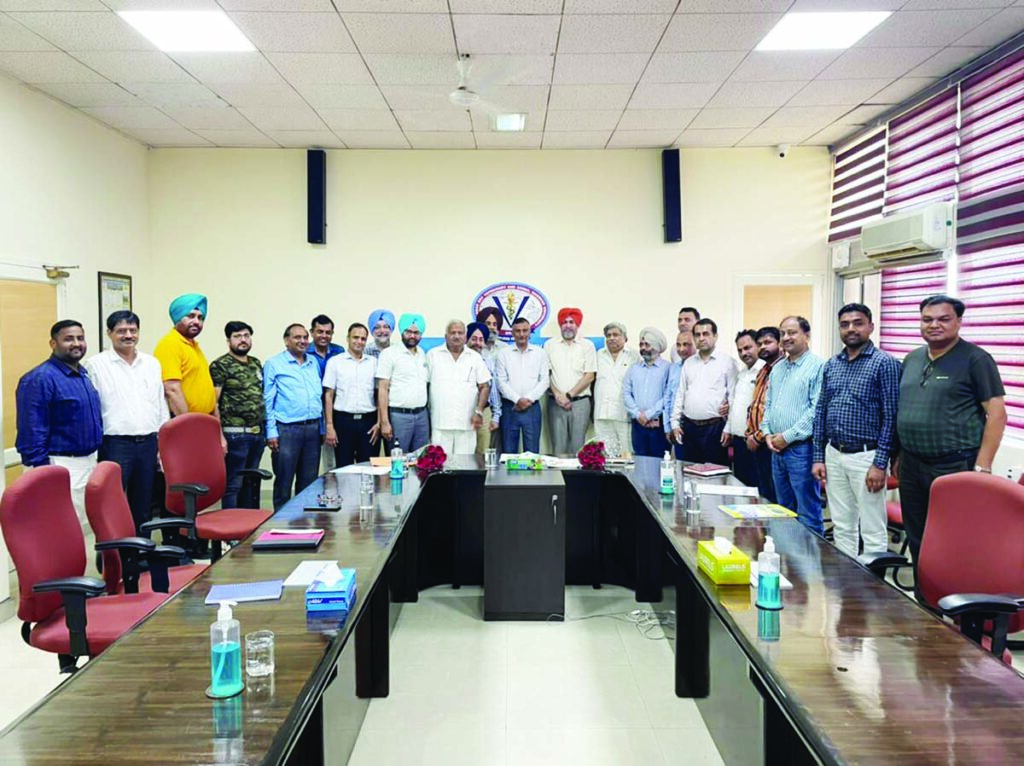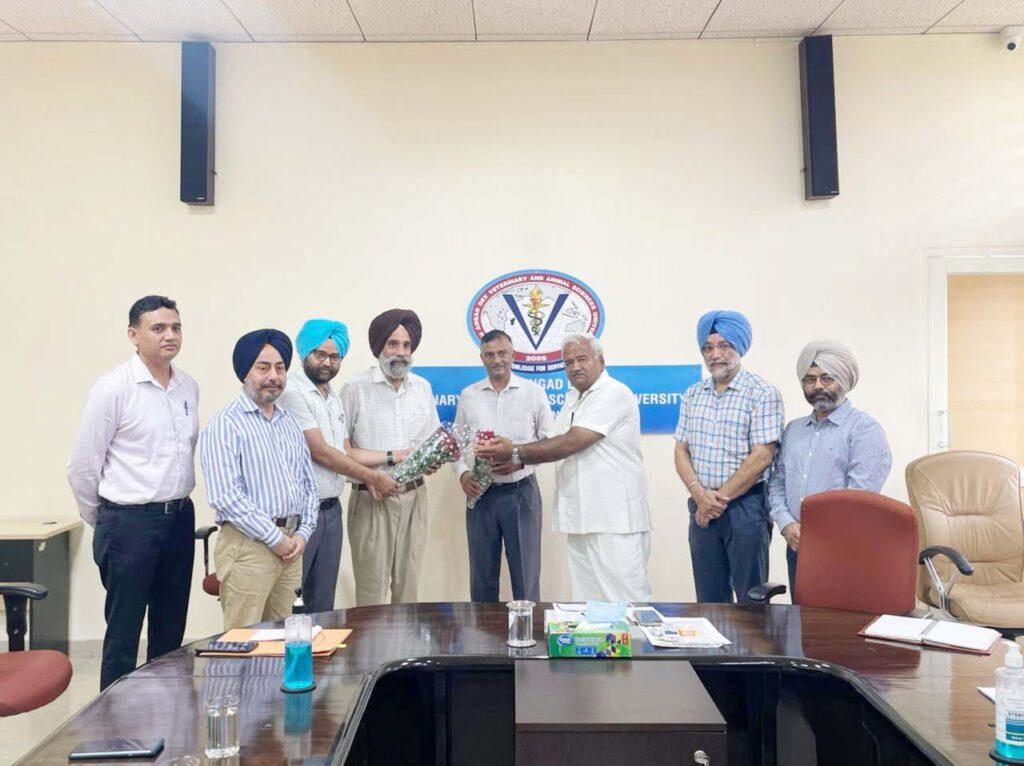A meeting was held between executive members of All Feed Millers Association (AFMA) and university officials to discuss feed manufacturing related new guidelines and difficulties to implement those. The meeting was chaired by Dr Inderjeet Singh, Worthy Vice Chancellor of Guru Angad Dev Veterinary and Animal Sciences University, Ludhiana.

Dr Parkash Singh Brar, Director of Extension Education welcomed all the participants and informed that in Punjab there are more than 1300 Cattle Feed Mill Units. Most of them had attended the three day Feed Manufacturing Course conducted by the university from 2009 to 2016. Due to the new guidelines by FSSAI and BIS regarding the quality parameters to be maintained by each feed miller, they have few apprehensions for their implementation.
Mr. Ashok Kumar, President AFMA thanked the university officials for giving platform to discuss the feed manufacturing issues which are difficult to implement. He said that AFMA is association of about 450 feed millers in Punjab catering to the needs of dairy farmers in North India producing around 0.35 million ton feed per annum. Mr. GS Sodhi, General Secretary of AFMA congratulated Dr Inderjeet Singh Hon’ble Vice Chancellor for becoming member of National Advisory Committee on Cattle & Buffalo. He informed that in Punjab around 5.7 million ton of cattle feed is produced annually and out of it only 18-20% is sold as branded feed. He wondered that the recent guidelines are applicable only on branded feed manufacturers whereas rest 80% of feed is customized by farmers themselves.
Dr Inderjeet Singh stated that FSSAI & BIS are National Statutory Bodies established under different acts. Their role is to safeguard the interest of consumers through various standards published by them after following proper procedures. Quality feed is the need of the hour but superfluous feeds are also being sold in the market resulting in low milk production and reduced conception. Already dairy farms are affected due to low realization of milk prices so we should look into these legislations with positive framework.
It was requested to look at new guidelines especially vitamin levels to be maintained in the feed. Earlier dairy experts used to say that there is no need of vitamin supplements as ruminants can synthesize the vitamins according to their need in the rumen. Moreover vitamin levels reduce due to storage, moisture and sunlight.
Another concerned of the feed millers was regarding the upper limit of aflatoxins levels. All of them voiced that 20 ppb cannot be achieved. It was emphasized that Punjab is located in temperate region and due to high temperature and humidity aflatoxins are always more especially during rainy seasons. Surprisingly major ingredients i.e. all grains (maize, wheat, bajra, rice etc) and de oiled rice bran (DORB) which are added around 6o percent in the feed have been allowed to have 50 ppb Aflatoxins. So it is not possible to make 20 ppb feed. Major sources of aflatoxins in the feed are maize, groundnut cake, DORB, cotton seed cake, ddgs. All the feed millers were of the view that they are simply manufacturers who buy raw materials, grind and mix them. They wanted that suppliers/traders of grains/DORB/cakes/meals etc must also come under these standards.
As silage industry has grown 3-4 times in recent years, the quality of silage is also being compromised.. It was pointed out that besides feed there are other sources of aflatoxins in dairy rations may be from poor fodder / silage or from straw / stovers.
Dr JPS Gill, Director of Research informed that aflatoxins levels in fodder / silage and straw are very less as compared to feed. FSSAI & BIS have taken a lot of feedback regarding aflatoxins levels. Main worry of GOI is to export milk products which at present are below 3%. One of the main causes is high M1 level in milk & its products. The residues of pesticides / insecticides / antibiotics etc are to follow. The European, American & Indian standard for M1 in milk at present is 0.05, 0.1 & 0.5 ppb respectively. Moreover, these laws / advisories are for those traders who market their produce in some packs e.g. feed is marketed in bags, paneer etc in small packs. FSSAI guidelines are for labeling and BIS set those standards. He informed that before recommending, BIS notifies the recommendations and invites suggestions /objections. Some feed mllers were worried about the cost of running the feed analytical laboratory mandatory for every feed mill under new guidelines. The cost of infrastructure (Building, Equipments / Chemicals / Manpower/Disposal of used chemicals, precautions etc) cannot be met by small feed mill owners. They asked university to provide facilities to test their feeds at reasonable cost so that their investment on analytical laboratory is saved.

Dr Inderjeet Singh Worthy Vice Chancellor pointed that for this facility, university lab should be accredited from NABL. He asked Head Animal Nutrition for needful to be done and revise the rates of different tests. He desired that frequent Seminars, Conferences, Campaign, AIR / TV programmes / Articles etc should be started to enlighten the public so that it demands quality products. He advised the feed millers to form different clusters and have laboratory for each cluster. He asked them to visit DST websites for establishing new laboratories. GOI under its NLM programme has invited proposals from entrepreneurs in Infrastructural Development Fund Scheme for setting / upgrading feed mills. In the meantime, he asked the feed millers to give their grievances in writing so that they can be forwarded to FSSAI / BIS for timely action.